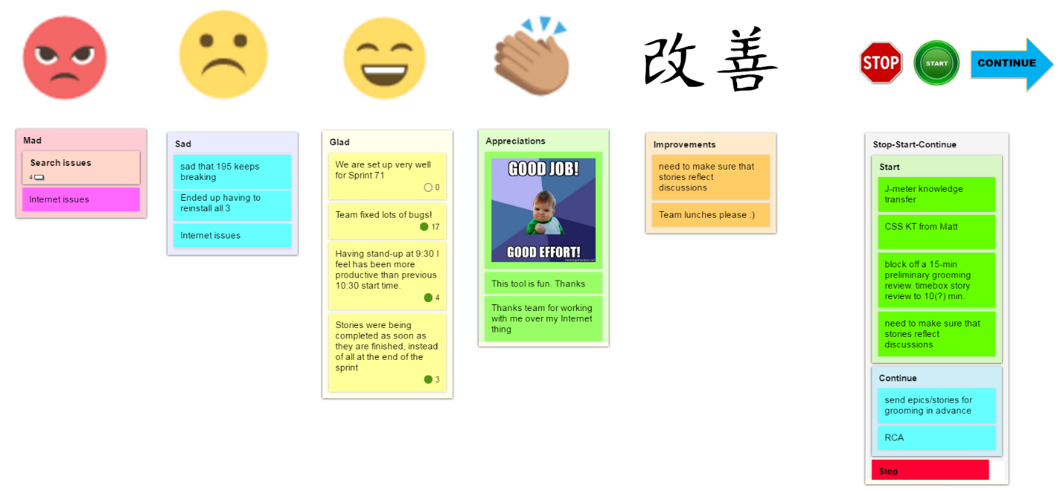A Sprint Retrospective is when a team takes time to analyze its performance of a Sprint. The retrospective comes after the Sprint Review and before the next Sprint Planning, and is when the team discusses:
- What went well in the Sprint
- What could be improved
- What commitments the team will make to improve the next Sprint
If you’re new to the Agile environment, be sure to tap the benefits of a Sprint retrospective. It can be a revealing and strategic tool for continuous improvement.
Some popular retrospective techniques are Glad-Sad-Mad, or Stop-Start-Continue.
Glad-Sad-Mad uses index cards or a whiteboard for team members to list observations made during a Sprint, which are then categorized in the areas of Glad, Mad, or Sad. They then vote on what to discuss and review the items, starting with those that have the highest number of votes. In Stop-Start-Continue, members may use a flip chart or paper to detail the team's feedback by using a wheel to assess a milestone using specific categories. Members then discuss these items.
Both techniques offer insights into the common goals of retrospectives: identify what’s working well, what’s not working, and what can be improved. These and other retrospective options work well for co-located teams, but in today’s workspace, co-located teams are not always the norm.
The Problem:
The most common retrospective techniques work well for co-located teams who can add notes to a physical, right-there-in-front-of-them board. For distributed teams, collaborating around a real-world board is challenging.
So, our Pega Scrum team made some changes.
The Solution Implemented:
A reference on an Agile blog led our Scrum Masters to a free website, Boardthing.com. Boardthing is a shared whiteboard where team members can create virtual sticky notes. By allowing for concurrent members to provide feedback in real time, Boardthing becomes a virtual space that strengthens collaboration and communication for the group. Trello is another commonly used tool for managing a board and tasks.
For our purposes, a prototype was shared internally with other Scrum Masters to test the theory that online collaboration could become a solution for distributed teams. Amongst ourselves, there was excitement that we’d have a better way to facilitate remote retrospectives, and we launched this with our teams.
The Result:
The teams each found the whiteboard tool intuitive and easy to use. With the shared link, team members could contribute notes and add them to the appropriate buckets, something they saw as an added bonus for collaboration.
In general, team members had a lot fun during these retrospectives. Use of this kind of tooling option has now expanded significantly throughout our organization. While the solution addressed a concern for distributed teams, co-located ones have also benefited from the visualization these tools provide. Collaborative whiteboarding has expanded beyond the realm of retrospectives to being used for innovation and ideation.


